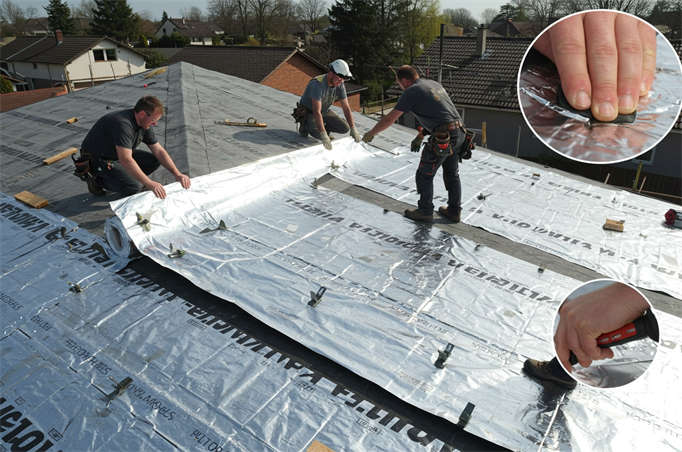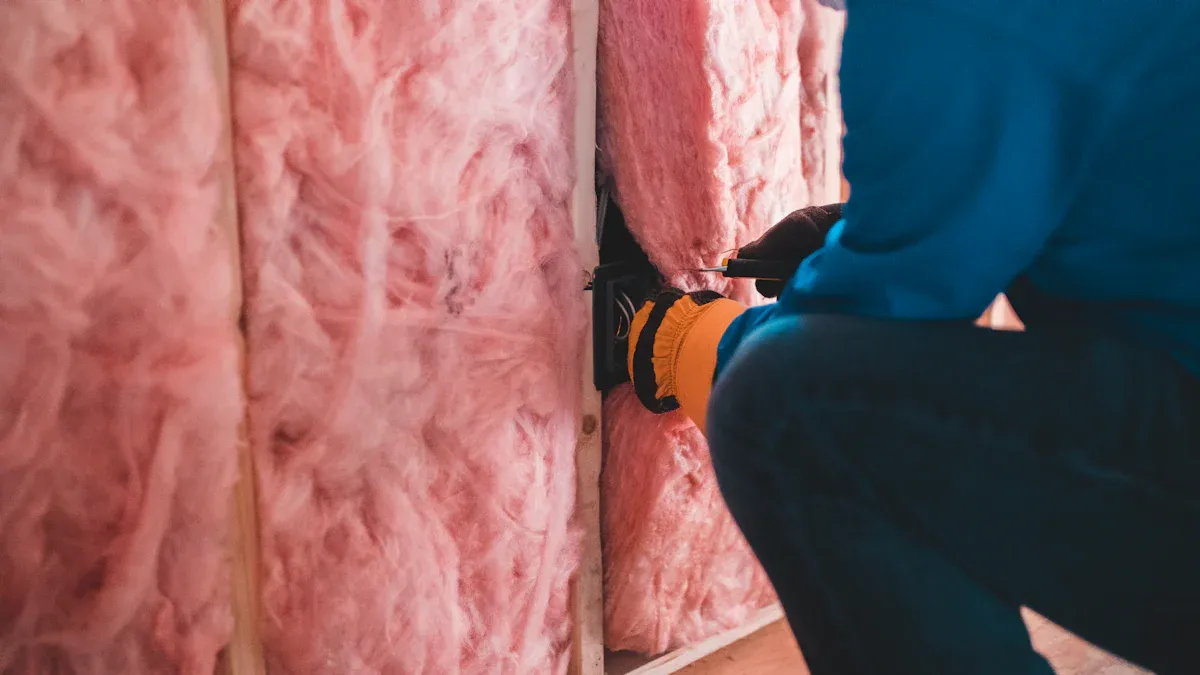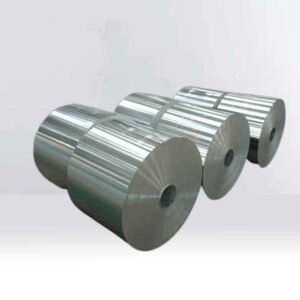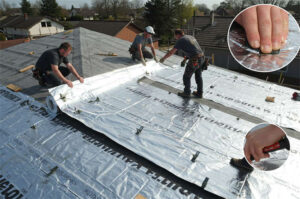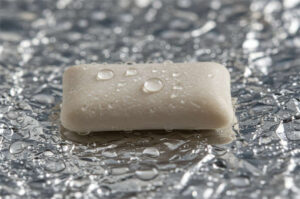You may ask which insulation is better for your house or business. Aluminum foil thermal insulation is great for reflecting radiant heat. It works best in hot and sunny places. Fiberglass insulation slows down heat moving through things. This makes it a good pick for many buildings.
- In 2024, fiberglass made up 56.9% of the commercial insulation market. People pick it because it costs less, is easy to put in, and keeps heat out.
- More people want foil insulation now, especially where saving energy is important.
Here is a quick comparison:
| Aspect | Aluminum Foil Insulation | Fiberglass Insulation |
|---|---|---|
| Heat Transfer Method | Blocks 97% of thermal radiation | Good at stopping conduction |
| Climate Suitability | Best for humid, sunny places | Works in most climates |
| Installation | Light and easy to install | Thicker, needs careful handling |
Key Takeaways
- Aluminum foil insulation sends heat away. This makes it great for hot places. It can lower cooling bills by 5-10%.
- Fiberglass insulation is cheap and used a lot. It slows down heat moving through walls. This makes it good for many types of weather.
- Using both aluminum foil and fiberglass insulation saves more energy. This mix sends heat away and also slows heat moving through walls.
- You can put in both types of insulation yourself. Use simple tools and wear safety gear to stay safe.
- Think about your weather when picking insulation. Hot places do well with foil. Cooler places may need fiberglass to keep heat inside.
Aluminum Foil Thermal Insulation vs Fiberglass
How Aluminum Foil Insulation Works
You might ask how aluminum foil thermal insulation helps your house. This insulation uses thin layers of aluminum foil. The foil reflects heat away from your rooms. When the sun shines on your roof, most heat comes as radiant energy. Aluminum foil insulation can reflect almost all of this heat. This keeps your attic or walls cooler.
Here’s a quick look at how well it reflects heat:
| Metric | Value Range |
|---|---|
| Emissivity | 0.03 – 0.06 |
| Reflectivity | 0.94 – 0.97 |
| Heat Reflection | 94% – 97% |
You can find aluminum foil thermal insulation in two main types: multifoil and bubble foil. Multifoil has many layers of foil, sometimes with foam or plastic. Bubble foil has small air bubbles between foil sheets. Both types work best with an air gap next to the foil. The real power comes from true aluminum layers, not just shiny plastic. If you want to reflect heat, make sure your insulation uses real aluminum.
How Fiberglass Insulation Works
Fiberglass insulation works differently. It does not reflect heat. Instead, it slows down heat moving through solid things. Fiberglass traps lots of tiny air pockets inside its fibers. These air pockets make it hard for heat to pass through.
- The fibers in fiberglass insulation are shaped to boost thermal resistance.
- Air gets trapped inside and between the fibers, making insulation pockets.
- Heat has to move in a zigzag path, so less heat gets through.
You usually see fiberglass insulation in batts or rolls. It fits between wall studs or ceiling joists. This insulation does not reflect radiant heat. But it is great at stopping heat from moving by conduction.
R-Value and Heat Reflection
You may have heard about r-value when looking for insulation. R-value shows how well a material stops heat flow. A higher r-value means better thermal resistance. Let’s compare the r-value and heat reflection of both types:
| Insulation Type | R-value per inch |
|---|---|
| Fiberglass batts | R-3.1 to R-3.8 |
| Closed cell spray foam | Up to R-7 |
| Insulation Type | Heat Reflection Capability | R-value Performance |
|---|---|---|
| Aluminum Foil Insulation | Good at reducing radiant heat, especially in hot places | Very low r-value alone; works better with air spaces |
| Fiberglass Insulation | Not made to reflect heat; stops heat moving through things | Higher r-value, important for building codes and thermal resistance |
Aluminum foil thermal insulation does not have a high r-value by itself. Its strength is in reflecting radiant heat. If you add an air gap, the r-value gets better. Fiberglass insulation has a higher r-value. It works well for stopping heat that moves through walls and ceilings.
Real-World Effectiveness
You might want to know how these insulations work in real homes. In hot places, aluminum foil insulation can help you save 5–10% on cooling energy. Some metal roofs show attic temperatures 8–10°F lower with aluminum foil insulation. This means your air conditioner does not have to work as hard.
Here’s a table showing some real-world test results for aluminum foil insulation:
| Property | Value |
|---|---|
| Emissivity | 0.07 ± 0.01 |
| Reflectivity | 93% |
| Fire Rating (Composite) | UL-94 V1 (horizontal and vertical) |
| Fire Rating (Single-sided) | V0 (horizontal), V1 (vertical) |
| Fire Rating (EPS) | V0 (horizontal), V1 (vertical) |
Fiberglass insulation also works well, especially in cold places. It helps keep heat inside during winter. Some builders use both types together. This gives you the best of both: you reflect radiant heat and slow down conductive heat.
Tip: If you live in a hot, sunny place, aluminum foil thermal insulation can help you feel more comfortable and save money on energy bills. In most places, fiberglass insulation is a good choice for meeting building codes and keeping your home warm.
Cost and Value of Insulation
Material and Installation Costs
When you pick insulation, price is important. You need to pay for the material and for someone to put it in. Here is a table that shows what foil-faced insulation costs:
| Type of Insulation | Average Cost per Square Foot |
|---|---|
| Foil Faced Insulation | $1.29 – $3.01 |
Now, let’s look at what it costs to have a contractor install insulation:
| Insulation Type | Cost per Square Foot (Installed) |
|---|---|
| Aluminum Foil Insulation | $0.50 – $1.50 |
| Fiberglass Batts | $0.80 – $1.80 |
| Blown-in Fiberglass | $0.50 – $1.30 |
Aluminum foil insulation and fiberglass insulation cost about the same to install. Sometimes, foil insulation is cheaper to put in because it is light and simple to use. Fiberglass batts can cost a little more, but blown-in fiberglass is often a good deal.
Long-Term Savings
Insulation should help you save money over time. Aluminum foil insulation can cut your energy bills by 5–10%. This works best if you live somewhere hot and use an air gap. Some studies say radiant barrier insulation saves you four times more money and pays for itself faster than just adding more fiberglass insulation.
| Insulation Type | Energy Savings (%) | Notes |
|---|---|---|
| Aluminum Foil Insulation | 5–10% | Works best in hot climates with air gap |
| Fiberglass Insulation | Baseline | Standard for most homes |
Tip: If you want to spend less on cooling, radiant barrier insulation can really help.
Combining Insulation Types
You do not have to use only one kind of insulation. Many people use both aluminum foil insulation and fiberglass insulation together. When you use both, you get more benefits. The foil keeps heat out, and the fiberglass stops heat from moving through your walls and ceilings. Experts say using both types makes your home better at saving energy. Reflective multi-foil insulation works well with fiberglass, so your house stays comfortable all year.
Installation and Ease of Use
DIY Friendliness
You might wonder if you can install insulation by yourself. Many homeowners choose to tackle this project on their own. Aluminum foil insulation feels light and easy to handle. You can cut it with scissors and staple it in place. Fiberglass insulation comes in batts or rolls. You can fit these between wall studs or ceiling joists. If you like simple projects, both types work well for DIY. Just remember to wear gloves and a mask when working with fiberglass.
Tools and Skills Needed
You do not need fancy tools for most insulation jobs. For aluminum foil insulation, you only need scissors, a staple gun, and some foil tape. You can measure and cut the material to fit your space. For fiberglass insulation, you need a utility knife, a straightedge, and a tape measure. You should also use safety gear like gloves, goggles, and a dust mask. Most people can learn these skills quickly. If you follow the instructions, you can get good results.
Common Challenges
Every insulation project has a few tricky parts. You may run into problems like gaps, poor sealing, or compressed material. Here is a table that shows common challenges and how you can fix them:
| Challenge | Mitigation Strategy |
|---|---|
| Ensuring proper air gaps | Preserve a continuous air space (3/4″–1½″ is typical). |
| Sealing seams | Tape seams; keep it as dust-sheltered as practical. |
| Maintaining ventilation | Add baffles at eaves; block wind-washing; pair with attic air sealing. |
| Installing fiberglass without compression | Install full depth without compression; friction-fit batts snug to framing. |
Tip: Take your time and check your work as you go. Good insulation keeps your home comfortable and saves energy.
Safety and Durability
Fire Resistance
It is important to know how insulation reacts to fire. Fiberglass insulation does not burn fast. It melts only at very high heat. This helps slow down fire spreading. Aluminum foil insulation also resists catching fire. The foil acts like a shield against flames. Some insulation has fire ratings like UL-94. This means it meets tough safety rules. Always look for fire ratings on the label before buying.
Health and Environmental Impact
You should care about your health and the earth when picking insulation. Here are some things to remember:
- Breathing in fiberglass fibers can hurt your lungs. Over time, it may cause lung disease or cancer.
- Touching fiberglass can make your skin itchy.
- Some spray foam insulations have chemicals that can cause allergies or breathing trouble.
- Making fiberglass uses lots of energy and makes pollution. It does not break down and can stay in landfills for a long time.
- Both fiberglass and aluminum foil insulation can add to landfill waste if not thrown away right.
To stay safe, wear gloves, a mask, and goggles when working with insulation. Try to recycle or throw away old insulation in a safe way.
Moisture, Mold, and Pest Resistance
You want your insulation to last and keep your home safe from mold and bugs. Fiberglass insulation does not feed mold, so it helps stop mold from growing. It works best if you install it the right way. Good installation helps control moisture and stops mold problems. Aluminum foil insulation acts as a vapor barrier. It keeps water out of your walls and attic. Both types of insulation do not attract bugs or mice. You do not have to worry about pests living in your walls.
Tip: Always keep your insulation dry. Wet insulation will not work as well to keep your home comfy.
Best Uses for Aluminum Foil Insulation
Attics and Roofs
You want your house cool in summer and warm in winter. The attic is important for this. Aluminum foil insulation works best in attics and on roofs. When you put foil in the attic, it reflects the sun’s heat away. This stops heat from getting into your rooms. Many people see big changes after adding foil in the attic. For example, a bed and breakfast owner said guests felt more comfortable and noticed even heat after using foil. In Texas, someone saved over 10% on their air conditioning bill after one summer with foil in the attic. An older homeowner in Kentucky said the house stayed cooler on hot days and warmer on cold nights with foil. A person in Alabama saw the house get 15–20 degrees cooler after putting foil in the attic. In North Carolina, a finished room above a garage felt 12 degrees cooler after adding foil. These stories show that foil in the attic really helps. It saves energy and keeps your home comfy all year.
Walls and Floors
You can use aluminum foil insulation in walls and floors too. It acts as a radiant barrier and blocks heat from moving through your house. If you use foil with fiberglass, you get the best results. Fiberglass traps air and stops heat from moving. Foil reflects heat away. Using both gives you strong attic insulation and helps save energy. Builders often say to use both for better energy savings.
Tip: If you want your home to feel better, try using foil in your walls and floors along with attic insulation.
Special Applications
Aluminum foil insulation is great in places where you need good temperature control. You see it in factories, warehouses, and farms. In these places, foil helps keep the inside temperature steady and lowers energy costs. Cold storage rooms use foil to keep things cold. Car makers use foil to block heat and noise inside cars. You also find foil in HVAC systems. It wraps around ducts and pipes to stop energy loss and keep water from forming. Air handling units use foil to keep air at the right temperature without leaks.
If you want attic insulation that does more than just keep your house comfy, aluminum foil insulation is a smart pick. It helps you save energy, works in many places, and gives you the comfort you want.
Insulation Myths and Misconceptions
R-Value Misunderstandings
Some people think a higher R-value is always better. This is not always true. R-value only shows how well insulation slows heat. It does not tell you about moisture, wind, or radiation. Many forget that radiation moves a lot of heat, especially in attics and roofs. If you only look at R-value and not how it is installed, you might get confused. The way heat moves also changes the R-value. Heat going up acts different than heat going sideways. Some insulation, like spray-in-place foam, blocks moisture and wind too. This can make it work better than fiberglass.
| Common R-Value Myths | What You Should Know |
|---|---|
| R-value tells the whole story | It ignores moisture, wind, and radiation |
| All R-values are equal | Installation and heat direction change real performance |
| Compare R-values only | Look at how insulation handles radiation and air movement |
Product Confusion
Ads can make insulation products sound the same. This can be confusing for buyers. Aluminum foil insulation reflects radiation. It works best in hot, sunny places. Fiberglass insulation stops heat moving by conduction and convection. It does not reflect radiation. Some companies use tricky words to make their product sound perfect. Each insulation type has good and bad points. Knowing what each does helps you choose the right one.
- Aluminum foil insulation: reflects radiation, great for hot climates
- Fiberglass insulation: slows conduction and convection, not made for radiation
- Marketing can mix up these facts and make it hard to choose
Climate Performance
You may wonder if one insulation works everywhere. The truth is, climate is very important. In hot, sunny places, radiation is the main way heat gets in. Aluminum foil insulation is great here because it reflects most radiation away. In cooler places, you want to keep heat inside. Fiberglass insulation helps by slowing heat loss, but it does not stop radiation. If you live where summers are long and hot, you will notice a big difference with insulation that blocks radiation. In places with mixed weather, using both types together works best.
Tip: Always think about how much radiation affects your home before you pick insulation. The right choice depends on your weather and where you install it.
Pros, Cons, and Choosing Insulation
Aluminum Foil Insulation Pros and Cons
You might ask if aluminum foil insulation is good for your house. Many people like it because it blocks heat from coming in. This insulation works best in hot places, especially in attics where the sun makes rooms hot. It is simple to put in, and you do not need special gear. It also keeps out water and air, so your house stays dry and cool.
Here’s a quick list of the main good and bad points:
| Advantages | Disadvantages |
|---|---|
| Low E-value (0.03) blocks heat well | Needs other insulation in cold places |
| Strong and lasts a long time | Must stay clean to work right |
| Does not soak up or hold heat | |
| Light and simple to install | |
| Stops air and water from getting in | |
| Keeps out moisture | |
| Helps keep rooms cool in hot weather | |
| Makes your home use less energy | |
| Safe and not toxic | |
| No special safety gear needed | |
| Good for the environment |
Tip: If you want to keep your attic cooler and block heat, aluminum foil insulation is a smart pick for your house.
Fiberglass Pros and Cons
Fiberglass insulation is a common choice for many homes. It slows heat by trapping air and works in most places. It also helps make rooms quieter and can stop fire from spreading. But if it gets wet or squished, it does not work as well.
Here is a table with the main good and bad points:
| Pros | Cons |
|---|---|
| Not expensive and easy to put in | Costs more in tricky attics |
| Lasts a long time | Takes more energy to make |
| Blocks air leaks in homes | Does not work well when wet |
| Makes rooms quieter | R-value drops when it is cold |
| Can slow down fire | |
| Has recycled parts |
Note: Always keep fiberglass dry so it keeps blocking heat and cold.
Choosing the Right Insulation
Picking the best insulation for your house depends on what you need. Ask yourself these things:
- Do you live somewhere hot where blocking heat is important?
- Does your roof need to keep out water or air?
- Do you want insulation that is easy and safe to put in?
Here is a table to help you pick:
| Criteria | Description |
|---|---|
| Climate Zone | Check your weather and local rules for R-value. |
| Roof Assembly | Know your roof type and if you need to block water or cover ducts. |
| Insulation Type | Use fiberglass for R-value; add foil if heat is a problem. |
| Specification Details | Make sure you have an air gap, good airflow, and control for water vapor. |
| Cost and Procurement | Compare prices and look for bundles to save money. |
If you are not sure, ask an expert. They can help you pick the best insulation for your house and get good results.
You want your attic to stay cool in summer and warm in winter. Aluminum foil insulation works best in your attic when you need to block radiant heat. Fiberglass insulation helps your attic by slowing heat loss and works in many climates. Many studies show that a radiant barrier in your attic can save more energy than just adding more fiberglass. You get the best results when you use both types in your attic. If you want to learn more about attic insulation, check out articles on fiberglass properties, R-value, and safety. Your attic will thank you for making the right choice.
FAQ
What is the main difference between aluminum foil and fiberglass insulation?
Aluminum foil insulation reflects heat away from your house. Fiberglass insulation slows down heat as it moves through walls. Foil is best for stopping radiant heat. Fiberglass helps with all kinds of heat loss. Using both together gives you better results.
Can I install insulation by myself?
Yes, you can put in insulation on your own. Aluminum foil insulation is light and easy to cut. Fiberglass comes in rolls or batts for walls and ceilings. Always wear gloves and a mask when you touch fiberglass. Go slow and follow the steps in the instructions.
How does insulation help with heat entering from a roof?
Insulation keeps heat from getting into your house through the roof. Aluminum foil bounces the sun’s heat away from your attic. Fiberglass traps air and slows down heat moving inside. Both types help your house stay cooler in summer.
Does insulation improve energy efficiency?
Yes, insulation makes your home use less energy. It keeps cool air inside in summer and warm air inside in winter. You will pay less for energy and feel comfortable all year.

